Aug 5, 2020 2:53:56 PM
Employee experience | Customer experience | Operations
Aug 5, 2020 2:53:56 PM
Employee experience | Customer experience | Operations
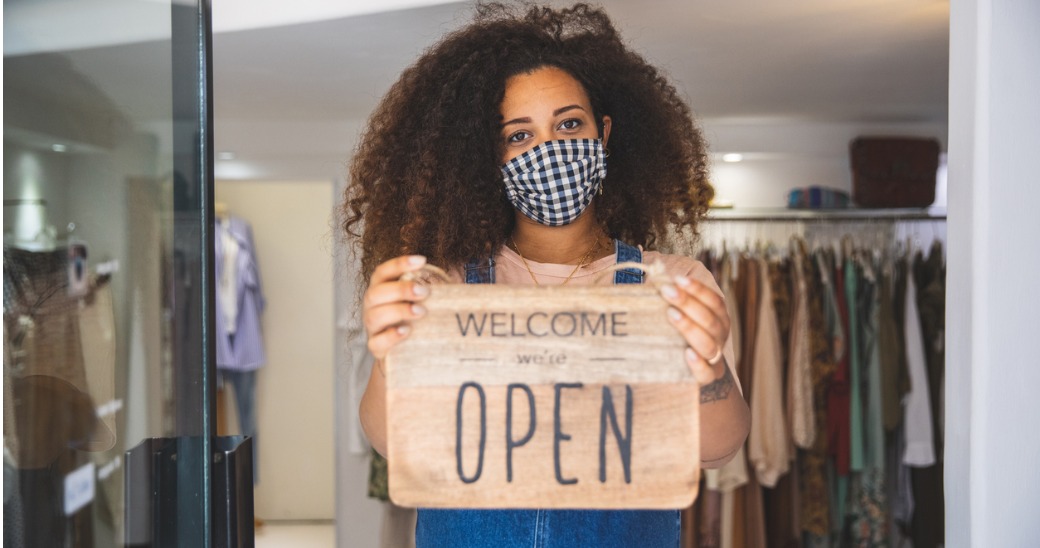
Remember the good old days when you could just walk into any store whenever you wanted to?
You've probably thought this to yourself as you ran back home 30 seconds after leaving because you forgot your mask, or threw in the towel on that retail therapy session you waited 5 months for because the line stretched all the way down the street.
COVID-19 has forced the in-store experience to reinvent itself more rapidly than at any other point in history.
Consumers themselves have changed too - the way they spend, their criteria for choosing the brands they spend with, and their priorities when it comes to shopping in-store.
What does this mean for retailers who want to coax shoppers back into stores and steadily ramp up brick and mortar sales?
It means that every in-store experience has to be better and safer than ever to be worthwhile to shoppers.
It also means that retailers have to operate their physical sites in a completely new way that:
- Keeps customers safe
- Has all the convenience of online shopping, but also
- Feels new, feels personalized, and puts the customer in control
That's a lot of boxes to tick off in one shopping session.
But rather than looking back at pre-COVID shopping with sadness-tinged nostalgia, could retail's new reality actually be an opportunity for innovation and a time for stores to truly shine?
That's where virtual shopping appointments and virtual queueing come in.
Both of these technologies have the power to completely transform retail in the COVID-19 era by making shopping safer, more convenient and more experiential than ever before.
In this guide, we'll cover the basics of virtual shopping and queueing, the benefits for retailers, store teams and customers, and things to consider when implementing them.
Table of Contents:
1. What is a virtual shopping appointment and how does it work?
2. Benefits of virtual shopping appointments
3. What is virtual queueing and how does it work?
4. Benefits of virtual queueing
5. Implementing a virtual shopping & queuing system: things to consider
Virtual shopping appointments connect a customer with a store associate via video chat for a one-to-one shopping session - all from the safety and comfort of home.
Customers get one-to-one advice from a sales associate, see products and new collections live, purchase items through ecommerce channels or set items aside for curbside or in-store pickup later.
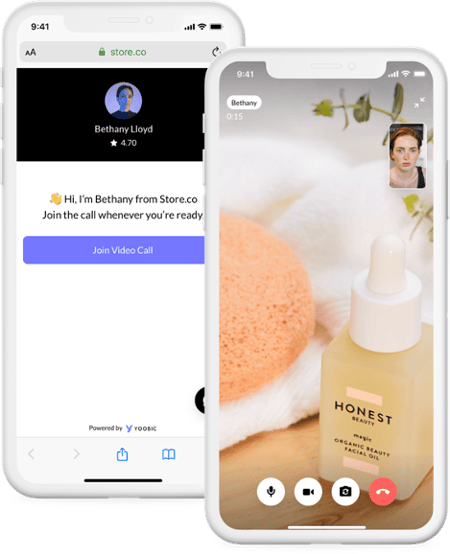
This is perfect for shoppers who aren't comfortable with returning to stores just yet, or are just short on time.
This strengthens the customer's connection with the brand. And let's be honest - we're all a bit starved of social contact these days, so face-to-face connection is nice for both the sales associate and the customer.
In a time when foot traffic in stores is at an all-time low, seeing fewer customers walk in can be very demotivating for store teams. Virtual shopping appointments are a great way for sales associates to develop their customer service skills and product knowledge without dependency on foot traffic. And as they build relationships with customers virtually, they build on their own engagement and satisfaction levels as well.
Virtual shopping gives sales associates even more bandwidth to make recommendations, cross-sells and up-sells, since one customer has their undivided attention without any distractions. And since the customer might enter a brief description of what they're looking for when they book the virtual shopping appointment, sales associates can enter the conversation with personalized recommendations they've prepared in advance.
None of us want another round of lockdowns, but we must be prepared for whatever the future holds. Virtual shopping appointments give customers the next best thing to shopping in-store, and give sales associates a platform for helping and connecting with customers that's not reliant on foot traffic.
After their one-to-one session with a helpful sales associate, customers can collect their items curbside, or book an appointment to pay for and collect them in-store.
Following up the virtual shopping session with an in-store appointment makes the experience even more convenient, exclusive and safe.
What better way to connect with a brand than being welcomed into a store for your very own shopping session?
And the next time customers make an in-store appointment, they might even be on a first name basis with store teams - just like the good old days.
However, many shoppers are ready to venture back in stores spontaneously, but are understandably still concerned about safety.
For these shoppers, virtual queueing is the best way to give them back control of their in-store experience.
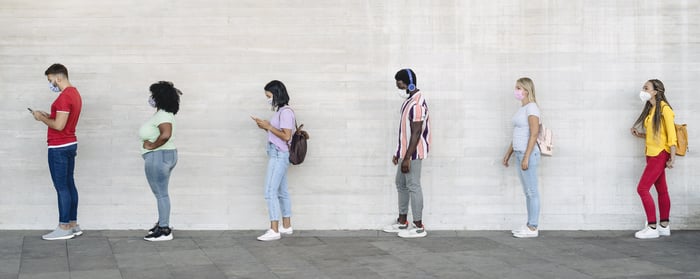
Whether you call them queues or lines, we all hate waiting in them.
Sure, we've come to accept waiting outside the store as a necessary evil over these last few months, but nothing stops shoppers dead in their tracks like a line that stretches all the way around the block.
Enter virtual queueing.
Virtual queueing gives customers the option of waiting in an online queue instead of a physical one. How and where they spend that wait time is completely up to them.
Virtual queueing helps store teams manage lines outside the store while making the waiting experience less of a hassle for customers.
Ultimately, virtual queueing helps stores uphold social distancing guidelines by:
Customers either scan a QR code outside the store or join the queue remotely from a retailer's website, and check how long the wait time is.
Customers can wait anywhere they'd like - at home, in their car with the AC on full blast or tucking into a tasty lunch on a patio nearby.
When it's their turn to enter the store for a little hard-earned, long awaited retail therapy, customers get a text or email letting them know.
They show the security guard or sales associate at the door their QR code or queue booking confirmation, and then the magic begins.
Using a virtual queueing system or a virtual queueing app makes it easier to enforce store capacity regulations. It also limits the number of people waiting outside and gives them more space to social distance. This information can then be communicated back to customers, boosting their trust in the brand and the safety of their in-store experience. Above all else, virtual queueing ensures there are fewer customers on-site which means fewer risky situations where COVID-19 can be spread.
Without virtual queueing, store teams have to carefully monitor the number of customers entering, leaving and browsing in-store. A virtual queueing system frees up their time and energy to focus where it matters most - helping customers. And since customers can spend their time however they want instead of standing in a long line, virtual queueing saves them time, too.
The biggest reasons shoppers are hesitant to visit stores is concern for their own safety. Virtual queueing reassures shoppers that each store is taking both their safety and the quality of the in-store experience seriously. Customers who feel comfortable with their first in-store experience are more likely to return. And customers who have an enjoyable in-store experience are 35% more likely to come back for round 2.
For every store that's reopened, there are many that will, unfortunately, stay closed indefinitely. There are also significantly fewer employees working in-store than before. As customers trickle back into stores, staff workloads will increase. And when you add in manually managing queues and store capacities, the result is a logistical nightmare for store teams. With a virtual queueing system, managing store capacity and lines outside is one less thing they'll have to worry about.
There's just something about signing up for a shopping session in-store that makes the whole experience feel more exclusive. And when the virtual queueing system offers additional options like booking an in-store appointment, brick and mortar becomes so much more VIP. The best way to make retail experiential during COVID-19 is to let customers choose their own experience.
Shoppers waiting in a queue or booking an in-store appointment have a higher purchase intent than shoppers who are just browsing, whether it be in-store or online. Since the in-store experience is less stressful and more enjoyable for customers, they'll spend more time looking around and adding more items to their basket. Store teams have more time to focus on helping and advising these higher purchase intent shoppers, which boosts conversions and basket sizes even more.
Retailers can allocate limited staff resources once they've gotten a clear picture of store traffic patterns based on data pulled from the virtual queueing app or system.
Customers input data before joining a virtual queue - something that rarely happened pre-COVID. That means better quality data which can then be used for better segmentation, retargeting and personalized marketing that truly reflects what customers are looking for. For example, ask customers the reason for their visit when they join the virtual queue for a more personalized in-store experience and better retargeting afterwards.
Nobody wants to wait in a long line in the scorching August heat. And when the cold weather rolls around, nobody wants to wait outside in that either. By getting a virtual queueing system up and running now, stores can future-proof (and weather-proof) themselves against conditions that cause customers to shop elsewhere (or not at all). Deploying a virtual queueing system sooner rather than later, when foot traffic is still manageable, will also put stores in a position to thrive during Black Friday and the holidays when foot traffic surges.
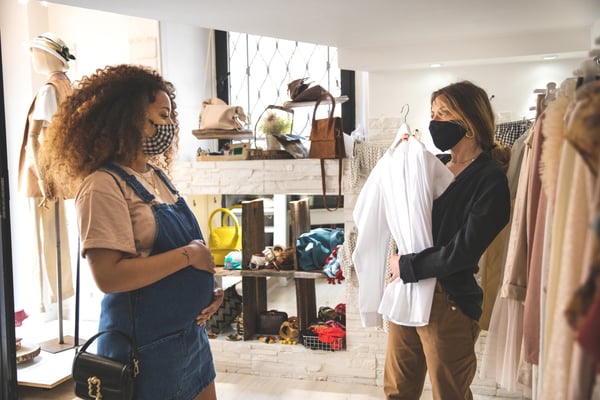
A virtual shopping and queueing system opens up a goldmine of data into customer intent, which can then be used for improved segmentation and retargeting. But the platform you choose should also provide visibility into important metrics about the in-store experience itself, like:
By understanding and monitoring these metrics, retailers can better support store teams which ultimately improves the in-store experience.
Sales associates are going to be doing a lot more with a lot less for the foreseeable future.
They're carrying a lot of responsibilities on their shoulders, so they need to be kept in the loop about how many shoppers are waiting in the queue, who those shoppers are, and how many appointments, curbside collections and virtual shopping sessions they have scheduled for the day.
Using a virtual queueing app like YOOBIC, sales associates have their own personal dashboards they can pull up on their mobile device to get an instant overview of who's in-store, who's waiting in line, and all the appointments they have coming up.
It's only a matter of time until virtual shopping and queueing become the industry's status quo and something customers expect.
So when choosing a system or app, consider the average deployment time. Is it weeks or days?
With YOOBIC's virtual shopping and queueing app, you can be up and running in as little as 3-5 days.
To make the most out of virtual shopping and queueing, the platform you choose should integrate well with other apps and tools already being used, like:
Not only does this streamline tasks for store teams and help them make personalized suggestions for shoppers, but it also gives retailers entirely new data sets to cross-reference and compare.
The virtual shopping and queueing system you choose is an extension of your brand, from the moment a shoppers joins the queue through to when they step inside the store.
Everything customers encounter should look visually consistent with your branding. Choose a platform that's customizable to give your shoppers a fully branded end-to-end experience that keeps them coming back for more.
To jump start a return to brick and mortar shopping, retailers have to make their customers feel like celebrities.
Customers expect more from brands these days - wherever their shopping experience takes place.
That's why retailers must be adaptable and agile and find the perfect balance of online and in-store.
Virtual shopping appointments and virtual queueing are the best ways for retailers to strike this balance in the COVID-19 era.
The main benefits of virtual shopping and virtual queueing are:
- Increased safety and a better brand reputation
- A better customer experience
- A better employee experience
- Increased conversion rate and basket size
In-store shopping isn't going away anytime soon - so long as it stays agile, adaptable, and laser-focused on customer needs and wants.
--
Retailers like Vans, Puma and Petit Bateau are making their in-store experiences safer, faster and better with virtual shopping appointments and virtual queueing from YOOBIC.
Customers can take control of their experience by choosing from booking a virtual or in-store appointment, or joining a virtual queue.
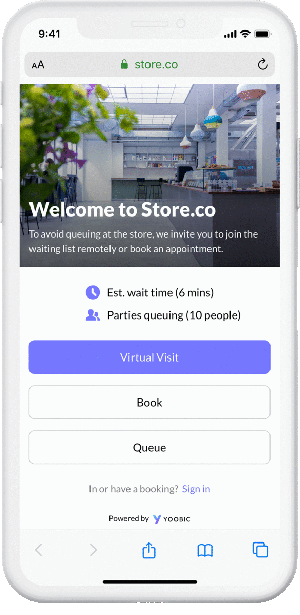
Store teams are refocused on providing an outstanding customer experience instead of the headache of manual queue management - all from an app that's easy to use and fully customizable with your branding.
Search the blog
Popular Posts

See why 350+ businesses are using YOOBIC
YOOBIC creates a better everyday working experience for frontline teams while helping businesses drive performance at scale.
PRODUCT
See why 350+ businesses are using YOOBIC
YOOBIC creates a better everyday working experience for frontline teams while helping businesses drive performance at scale.